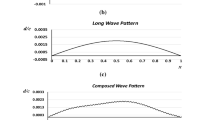Abstract
Aeronautical companies are manufacturing many components of small (less than 200 mm) and medium (between 200 mm and 1000 mm) sizes by flexforming. In order to diversify the production facilities of these components, these companies are interested in evaluating the ability of electromagnetic forming processes to produce small parts. This paper describes the design of a set of experiments of electromagnetic flanging with some elementary geometries, whose purpose is to enlighten several geometrical defect issues encountered, and to propose some solutions. A particular attention is first paid to the straight flange, which allows to analyse, understand and then correct the main defect issues that can occur during the forming. The proposed solutions consist of some particular design of the inductors and the dies, in order to adjust the profile of the loading and the kinematics of bending of the flange to obtain the desired final geometry. Next, curved flanges are addressed, and finally the forming of a model aeronautical part combining several elementary geometries of flange is described. Promising results are obtained. In these experiments, sheets of 1, 2 and 1.6 mm thickness made of aluminium alloy 2024-T4 and sheets of 0.5 mm thickness made of aluminium alloy 1050 are used. The geometric dispersions and the material soundness of the parts have been controlled. Besides, a numerical model of the model aeronautical part has been developed in the LS-DYNA computing environment, whose final purpose is to facilitate the design of the coil. The results of the numerical simulations are shown to be qualitatively in accordance with experimental results.
































Similar content being viewed by others
References
Karaagac I (2017) . Arab J Sci Eng 42(5):1853
Seth M, Vohnout VJ, Daehn GS (2005) . J Mater Process Technol 168(3):390
Psyk V, Risch D, Kinsey B, Tekkaya AE, Kleiner M (2011) . J Mater Process Technol 211(5):787
Lindholm U, Bessey R, Smith G (1971) . J Mater 6(1):119
Balanethiram VS, Daehn GS (1994) Scripta Metallurgica et Materialia, 30(4)
Golovashchenko SF (2005) . J Mater Eng Perform 14(4):508
Avitzur B (1968) Metal forming: processes and analysis, vol 968. McGraw-Hill, New York
L’ Eplattenier P, Cook G, Ashcraft C, Burger M, Imbert J, Worswick M (2009) . Steel Res Int 80(5):351
Lai Z, Han X, Cao Q, Qiu L, Zhou Z, Li L (2013) . IEEE Trans Appl Supercond 24(3):1
Su H, Huang L, Li J, Li G, Huang P (2017) . Procedia Eng 207:335
Yu H, Zheng Q, Wang S, Wang Y (2018) . J Mater Process Technol 257:54
Xiong Q, Huang H, Xia L, Tang H, Qiu L (2019) Int J Adv Manuf Technol, 1–8
Luo W, Huang L, Li J, Liu X, Wang Z (2014) . J Mater Process Technol 214(11):2811
Su H, Huang L, Li J, Ma F, Huang P, Feng F (2018) . Int J Mach Tools Manuf 124:99
Jimbert P, Eguia I, Gutierrez M, Gonzalez B, Daehn G, Zhang Y, Anderson R, Sundberg H, Olsson S, Brännström P (2008). In: Proceedings of the 3rd international conference on high speed forming – ICHSF. Citeseer, pp 163–172
Shang J, L’Eplattenier P, Wilkerson L, Hatkevich S (2010). In: 11th International LS-DYNA users conference, Detroit , pp 10–27
VanBenthysen R, Kinsey B (2010) . High Speed Forming 2010:208
VanBenthysen R, Thibaudeau E, Kinsey B (2013) . J Manuf Process 15(2):194
Noh HG, Song WJ, Kang BS, Kim J (2014) . J Mech Sci Technol 28(8):3263
Liu X, Huang L, Su H, Ma F, Li J (2018) . Materials 11(8):1450
Wang L (2011) Foundations of stress waves. Elsevier
Meyers MA (1994) Dynamic behavior of materials. Wiley
Hodowany J, Ravichandran G, Rosakis A, Rosakis P (2000) . Exper Mech 40(2):113
Acknowledgements
This study is part of the HPP project managed by IRT Jules Vernes (French Institute in Research and Technology in advanced manufacturing Technologies for composite, metallic and hybrid structures). The authors wish to acknowledge the industrial and academic partners of the project: Airbus, Airbus Group Innovations, Constellium, Europe Technologies, Stelia Aerospace and Ecole Centrale de Nantes respectively. The authors also wish to acknowledge DynaS+ for the simulation performed on LS-DYNA.
Author information
Authors and Affiliations
Corresponding author
Ethics declarations
Conflict of interests
The authors declare that they have no conflict of interest.
Additional information
Publisher’s note
Springer Nature remains neutral with regard to jurisdictional claims in published maps and institutional affiliations.
Rights and permissions
About this article
Cite this article
Sow, C.T., Bazin, G., Heuzé, T. et al. Electromagnetic flanging: from elementary geometries to aeronautical components. Int J Mater Form 13, 423–443 (2020). https://doi.org/10.1007/s12289-020-01547-y
Received:
Accepted:
Published:
Issue Date:
DOI: https://doi.org/10.1007/s12289-020-01547-y




